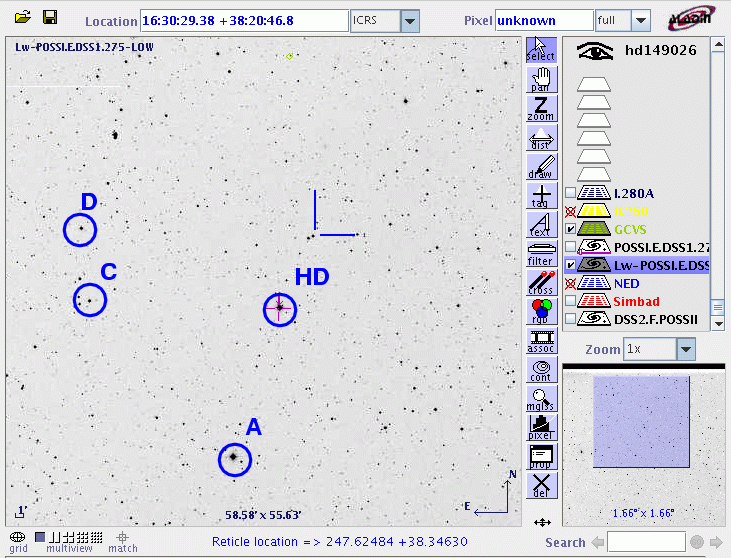
On the night of UT May 05, 2008, the SDSS Photometric Telescope ("PT" for short) took a series of exposures of HD 149026. Conditions were poor. I think we failed to detect the ingress of this system (and the egress occurred after the end of our run).
Notes from the night
This is a chart of the field. HD149026 is the bright star indicated by the crosshairs. The labelled stars will appear in later analysis.

As a side note, the star marked by short line segments (the northwestern component of a close pair) is an eclipsing binary with a period which _might_ be about 7.7 hours.
The host star of HD149026 has a magnitude V=8.16 according to The N2K Consortium. II. A Transiting Hot Saturn Around HD 149026 With a Large Dense Core. However, there's a note in the Exoplanets Encyclopedia about this planet which states "25 Nov 06: Wright et al 2006 raise doubts about this planet."
Following the procedures outlined by Kent Honeycutt's article on inhomogeneous ensemble photometry, I used all stars available in each image to define a reference frame, and measured each star against this frame. You can find the software package used to do the ensemble photometry online; it's free!
The graph below shows the amount by which instrumental magnitudes from each image needed to be shifted to match the ensemble reference (after removing the two outliers). On a clear night, this graph would show a straight horizontal line.
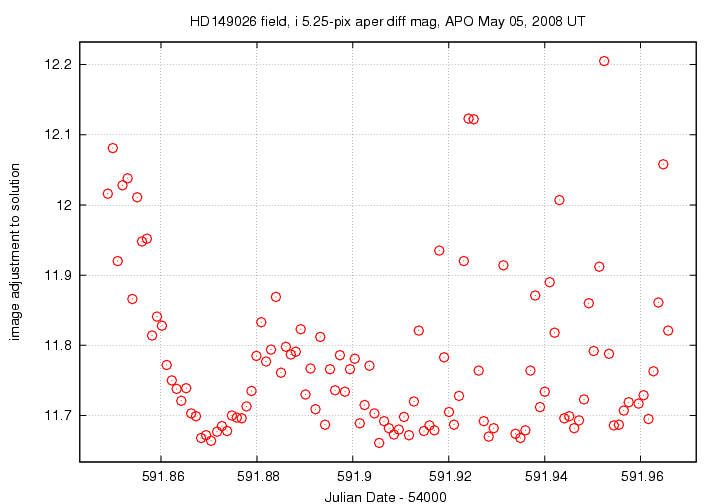
Below is a graph of the scatter in differential magnitude versus magnitude in the ensemble solution.
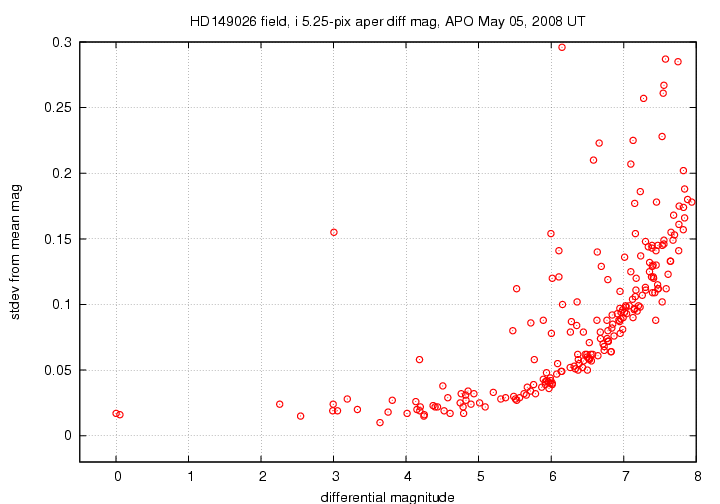
HD149026 is the fainter of the two stars near differential mag 0.0; it ought to show a small excess of scatter over the neighboring star of the same brightness, but doesn't. The "noise floor" in these measurements is about 0.016 mag -- very poor, due to the small number of bright comparison stars (and perhaps the short exposure times). The two brightest stars may be saturated slightly.
Below are the light curves for the target (green symbols) and some comparison stars in the field.
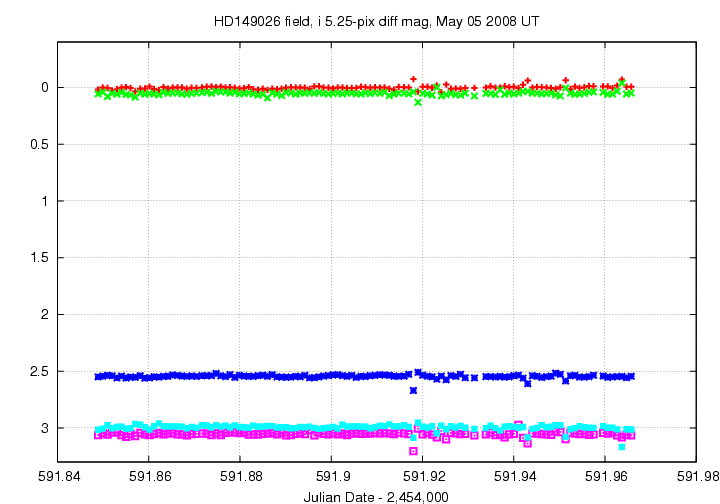
In this closeup, I have shifted the data for two comparison stars to move them closer in magnitude to the target.
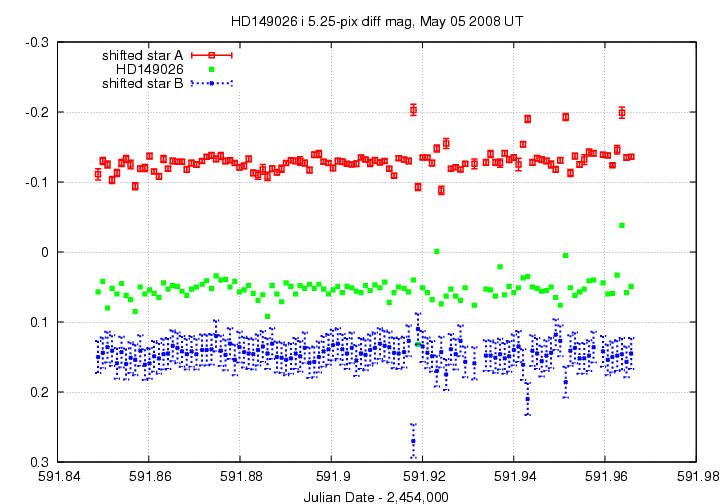
I don't see an event in this data -- it is far too noisy to show the very shallow (0.003 mag) dip in this system.
Justin's listing for this event gives the ingress time as 09:15 UT = 591.885; I see nothing like an ingress at this time. His egress time is 12:30 UT = 592.021, which is after the end of our measurements.
You can grab the measurements for your own analysis. Below is a table with three flavors of time, plus the differential magnitude of the target and an estimate of the uncertainty in each measurement. I show the first few lines of the file to give you an idea of its format.
# Measurements of HD149026 made with APO PT, May 5, 2008 UT. # Each exposure 3 seconds long in SDSS i-band; # Tabulated times are midexposure (FITS header time - half exposure length) # and accurate only to +/- 1 second (??). # 'mag' is a differential magnitude based on ensemble photometry # using a circular aperture of radius 5.25 arcseconds. # # UT day JD-2,450,000 HJD-2,450,000 mag uncert May05.84892 4591.84892 4591.85187 0.057 0.018 May05.84995 4591.84995 4591.85290 0.042 0.017 May05.85098 4591.85098 4591.85393 0.080 0.017
Last modified 06/20/2008 by MWR.